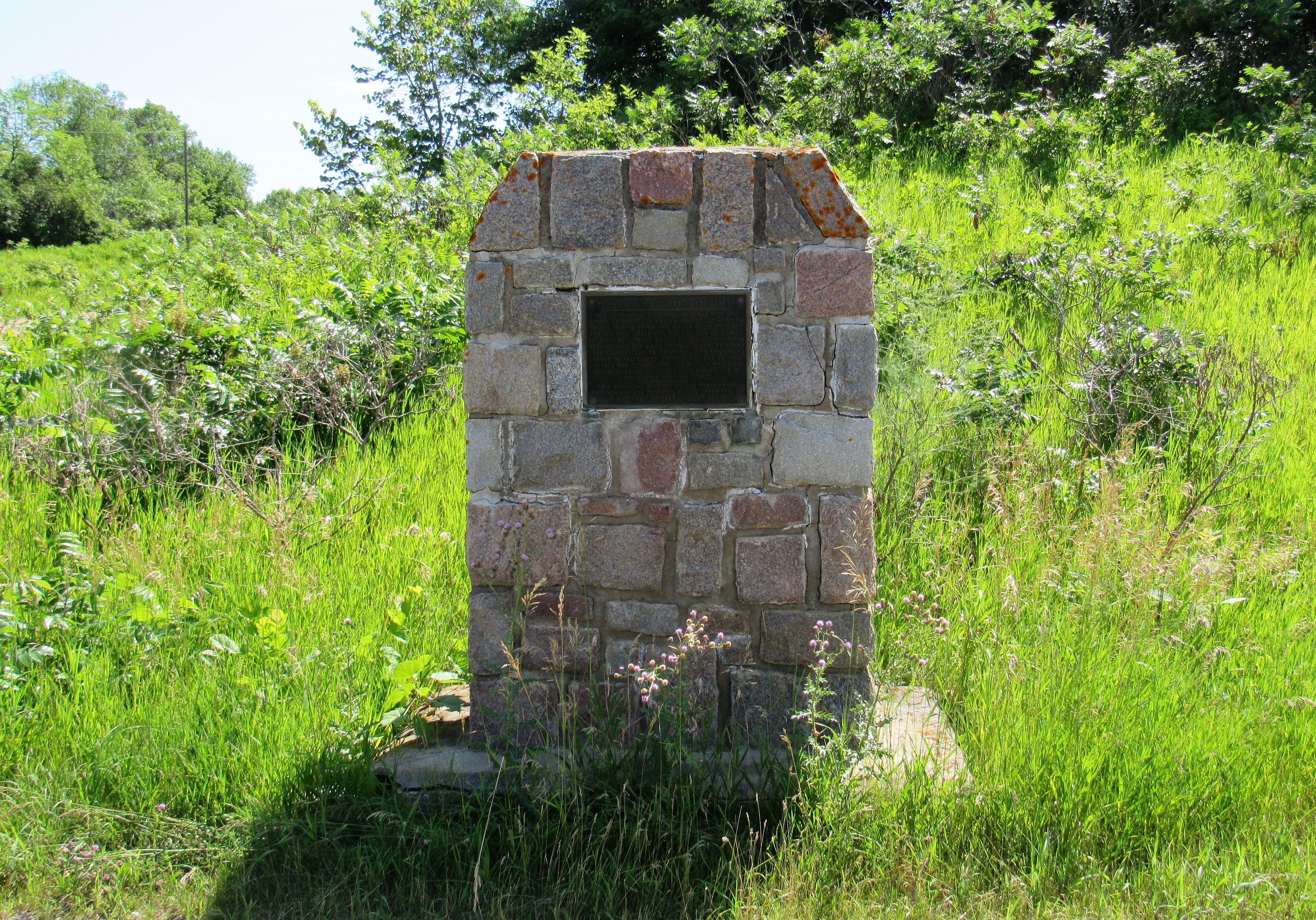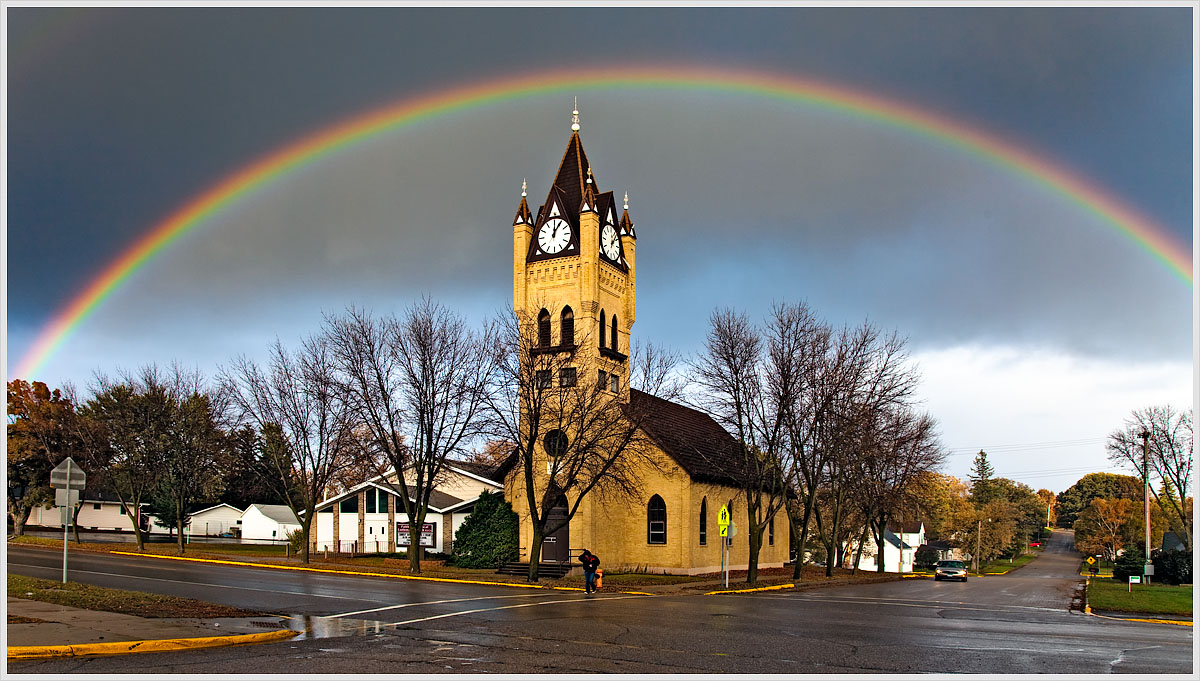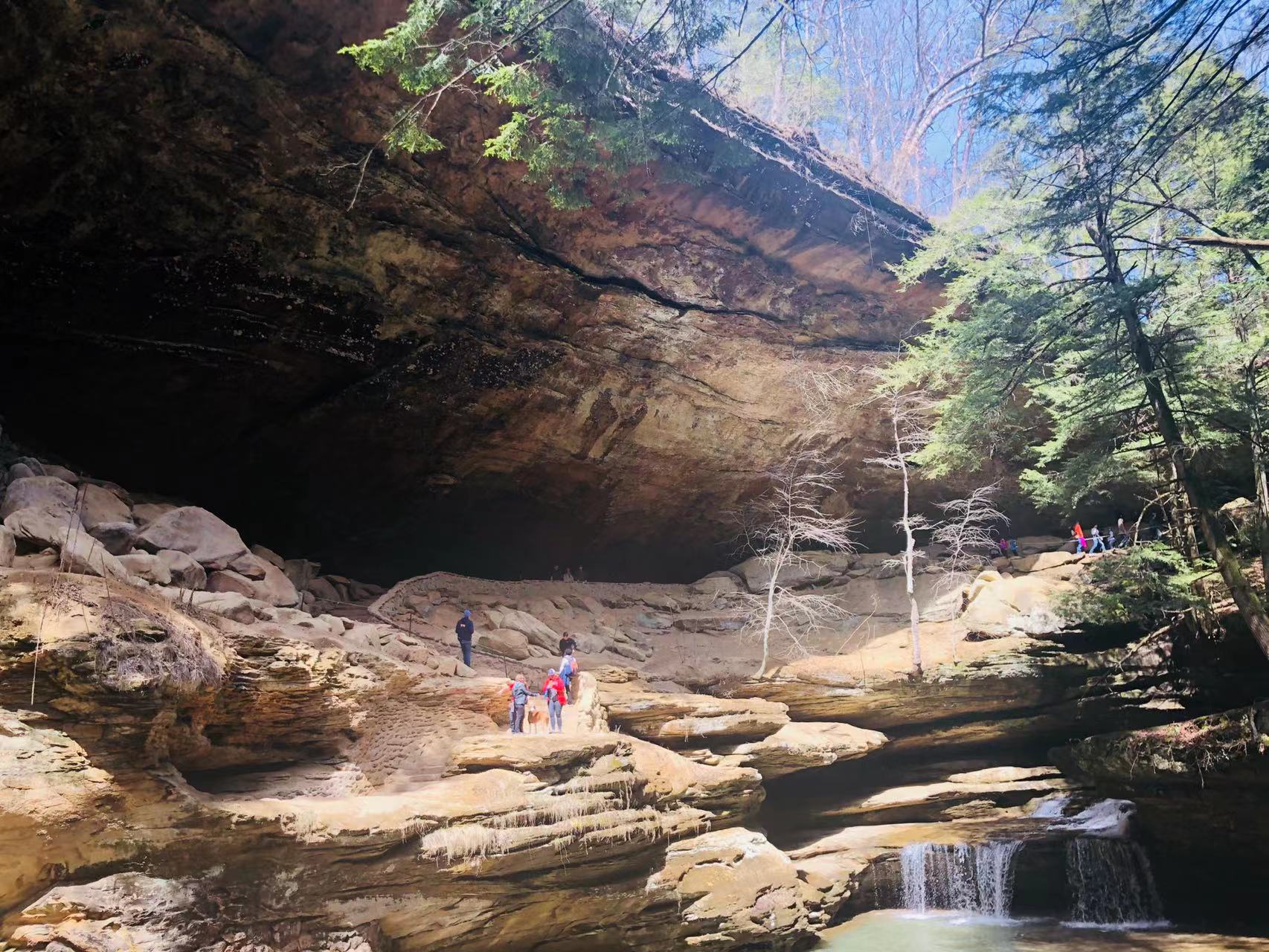|
Maplewood State Park
Maplewood State Park is a state park of Minnesota, United States, near Pelican Rapids. The park preserves a pre-contact habitation site that was occupied in two different periods (650–900 CE and 1450–1650 CE) in a forest/prairie transition zone. Located in the Leaf Mountains, Maplewood encompasses in Otter Tail County and is known for its hardwood trees including sugar maple, basswood, American elm, and oak, which together provide a display of fall colors each year. It became a state park in 1965, and an archeological site within the park, the Maplewood Site, was listed on the National Register of Historic Places The National Register of Historic Places (NRHP) is the Federal government of the United States, United States federal government's official United States National Register of Historic Places listings, list of sites, buildings, structures, Hist ... in 1978. Popular culture Jim Fletcher, the author of ''The Lore Adventure Trilogy'', built several small vill ... [...More Info...] [...Related Items...] OR: [Wikipedia] [Google] [Baidu] |
Otter Tail County, Minnesota
Otter Tail County is a county in the U.S. state of Minnesota. As of the 2020 census, the population was 60,081, and was estimated to be 60,884 in 2024. The county seat and the largest city is Fergus Falls. Otter Tail County comprises the Fergus Falls micropolitan statistical area. With 1,048 lakes in its borders, Otter Tail County has more lakes than any other county in the United States. History Native Americans used the area for hunting and fishing and had permanent dwelling sites. Two Native American tribes were in constant conflict. The Dakota (Sioux) were being pushed from their home area by the Ojibwa (Chippewa) during the late 18th and early 19th centuries. Burial mounds and artifacts can still be found. Some of the oldest Native American remains were found near Pelican Rapids, Minnesota. The remains, nicknamed Minnesota Girl, were dated at about 11,000 BC. The first European men to enter the county were French and British fur traders. Efforts were made to set up ... [...More Info...] [...Related Items...] OR: [Wikipedia] [Google] [Baidu] |
Pelican Rapids, Minnesota
Pelican Rapids is a city in Otter Tail County, Minnesota, United States. The population was 2,577 at the 2020 census. History Pelican Rapids was platted in 1872, and named for the rapids on the Pelican River. A post office has been in operation at Pelican Rapids since 1872. Pelican Rapids was incorporated in 1882. Geography According to the United States Census Bureau, the city has a total area of , of which is land and is water. U.S. Highway 59 and Minnesota State Highway 108 are two of the main routes in the city. Culture Local landmarks include "Pelican Pete", a sculpture constructed beside the river in 1957 that is claimed to be the world's largest statue of a pelican. It stands tall and is constructed from concrete and plaster. A survey of the state's architecture published by the University of Minnesota Press characterizes Pelican Pete as "An effective programmatic advertisement for the town, just eye-catching and outrageous enough to attract considerable atten ... [...More Info...] [...Related Items...] OR: [Wikipedia] [Google] [Baidu] |
State Park
State parks are parks or other protected areas managed at the sub-national level within those nations which use "Federated state, state" as a political subdivision. State parks are typically established by a state to preserve a location on account of its natural beauty, historic interest, or recreational potential. There are state parks under the administration of the government of each U.S. state, some of the political divisions of Mexico#States, Mexican states, and in Brazil. The term is also used in the Australian states of template:state parks of Victoria, Victoria and state parks of New South Wales, New South Wales. The equivalent term used in Canada, Argentina, South Africa, and Belgium, is provincial park. Similar systems of local government maintained parks exist in other countries, but the terminology varies. State parks are thus similar to national parks, but under state rather than federal administration. Similarly, local government entities below state level may maint ... [...More Info...] [...Related Items...] OR: [Wikipedia] [Google] [Baidu] |
Minnesota
Minnesota ( ) is a U.S. state, state in the Upper Midwestern region of the United States. It is bordered by the Canadian provinces of Manitoba and Ontario to the north and east and by the U.S. states of Wisconsin to the east, Iowa to the south, and North Dakota and South Dakota to the west. It is the List of U.S. states and territories by area, 12th-largest U.S. state in area and the List of U.S. states and territories by population, 22nd-most populous, with about 5.8 million residents. Minnesota is known as the "Land of 10,000 Lakes"; it has 14,420 bodies of fresh water covering at least ten acres each. Roughly a third of the state is Forest cover by state and territory in the United States, forested. Much of the remainder is prairie and farmland. More than 60% of Minnesotans (about 3.71 million) live in the Minneapolis–Saint Paul metropolitan area, known as the "Twin Cities", which is Minnesota's main Politics of Minnesota, political, Economy of Minnesota, economic, and C ... [...More Info...] [...Related Items...] OR: [Wikipedia] [Google] [Baidu] |
Ecotone
An ecotone is a transitional area between two plant communities, where these meet and integrate. Examples include areas between grassland and forest, estuaries and lagoon, freshwater and sea water etc. An ecotone may be narrow or wide, and it may be local (the zone between a field and forest) or regional (the transition between forest and grassland ecosystems). An ecotone may appear on the ground as a gradual blending of the two communities across a broad area, or it may manifest itself as a sharp boundary line. Etymology The word ''ecotone'' was coined (and its etymology given) in 1904 in "The Development and Structure of Vegetation" (Lincoln, Nebraska: Botanical Seminar) by Frederic E. Clements. It is formed as a combination of ''ecology'' plus ''-tone'', from the Greek ''tonos'' or tension – in other words, a place where ecologies are in tension. Features There are several distinguishing features of an ecotone. First, an ecotone can have a sharp vegetation transition, wi ... [...More Info...] [...Related Items...] OR: [Wikipedia] [Google] [Baidu] |
Leaf Mountains
The Leaf Hills Moraines, sometimes called the Leaf Mountains, are a range of hills in west-central Minnesota. The land does not exhibit many characteristics of mountains, and rises typically to a height of above the surrounding farmland, occasionally reaching higher than . The name of this range of hills is translated from the Ojibwe ''Gaaskibag-wajiwan'', which was interpreted by Gilfillan as “Rustling Leaf Mountains.” The name is also shared by Leaf Mountain Township, the two Leaf Lakes ("''Gaaskibag-wajiwi-zaaga'iganan''"), and the Leaf River ("''Gaaskibag-wajiwi-ziibi''"), all named for the hills. In turn, the hills in Ojibwe are named after Inspiration Peak ("''Gaaskibag-wajiw''"), a prominent hill in this area. Description The hills are described by Upham as "running southeast from Fergus Falls to the south line of the county and thence east and northeast to East Leaf Lake, a distance of 50 miles." Through their full extent in Otter Tail County, the hills have st ... [...More Info...] [...Related Items...] OR: [Wikipedia] [Google] [Baidu] |
Sugar Maple
''Acer saccharum'', the sugar maple, is a species of flowering plant in the soapberry and lychee family Sapindaceae. It is native to the hardwood forests of eastern Canada and the eastern United States. Sugar maple is best known for being the primary source of maple syrup and for its brightly colored fall foliage. It may also be called "rock maple," "sugar tree," "sweet maple," or, particularly in reference to the wood, "hard maple," " birds-eye maple," or "curly maple," the last two being specially figured lumber. Description ''Acer saccharum'' is a deciduous tree normally reaching heights of , and exceptionally up to . A 10-year-old tree is typically about tall. As with most trees, forest-grown sugar maples form a much taller trunk and narrower canopy than open-growth ones. The leaves are deciduous, up to long and wide, palmate, with five lobes and borne in opposite pairs. The basal lobes are relatively small, while the upper lobes are larger and deeply notched. In con ... [...More Info...] [...Related Items...] OR: [Wikipedia] [Google] [Baidu] |
Basswood
''Tilia americana'' is a species of tree in the family Malvaceae, native to eastern North America, from southeast Manitoba east to New Brunswick, southwest to northeast Oklahoma, southeast to South Carolina, and west along the Niobrara River to Cherry County, Nebraska. It is the sole representative of its genus in the Western Hemisphere, assuming ''T. caroliniana'' is treated as a subspecies or local ecotype of ''T. americana''. Common names include American basswood and American linden. Description The American basswood is a medium-sized to large deciduous tree reaching a height of exceptionally with a trunk diameter of at maturity. It grows faster than many North American hardwoods, often twice the annual growth rate of American beech and many birch species. Life expectancy is around 200 years, with flowering and seeding generally occurring between 15 and 100 years, though occasionally seed production may start as early as eight years. The crown is domed, the branch ... [...More Info...] [...Related Items...] OR: [Wikipedia] [Google] [Baidu] |
American Elm
''Ulmus americana'', generally known as the American elm or, less commonly, as the white elm or water elm, is a species of elm native to eastern North America. The trees can live for several hundred years. It is a very hardy species that can withstand low winter temperatures, but it is affected by Dutch elm disease. The wood was seldom utilized until the advent of mechanical sawing. It is the state tree of Massachusetts and North Dakota. Description The American elm is a deciduous tree which, under ideal conditions, can grow to heights of . The trunk may have a diameter at breast height (dbh) of more than , supporting a high, spreading umbrella-like canopy. The leaves are alternate, long, with double-serrate margins and an oblique base. The leaves turn yellow in the fall. The perfect flowers are small, purple-brown and, being wind-pollinated, apetalous. The flowers are also protogynous, the female parts maturing before the male, thus reducing, but not eliminating, self-f ... [...More Info...] [...Related Items...] OR: [Wikipedia] [Google] [Baidu] |
Archaeology
Archaeology or archeology is the study of human activity through the recovery and analysis of material culture. The archaeological record consists of Artifact (archaeology), artifacts, architecture, biofact (archaeology), biofacts or ecofacts, archaeological site, sites, and cultural landscapes. Archaeology can be considered both a social science and a branch of the humanities. It is usually considered an independent academic discipline, but may also be classified as part of anthropology (in North America – the four-field approach), history or geography. The discipline involves Survey (archaeology), surveying, Archaeological excavation, excavation, and eventually Post excavation, analysis of data collected, to learn more about the past. In broad scope, archaeology relies on cross-disciplinary research. Archaeologists study human prehistory and history, from the development of the first stone tools at Lomekwi in East Africa 3.3 million years ago up until recent decades. A ... [...More Info...] [...Related Items...] OR: [Wikipedia] [Google] [Baidu] |
National Register Of Historic Places
The National Register of Historic Places (NRHP) is the Federal government of the United States, United States federal government's official United States National Register of Historic Places listings, list of sites, buildings, structures, Historic districts in the United States, districts, and objects deemed worthy of Historic preservation, preservation for their historical significance or "great artistic value". The enactment of the National Historic Preservation Act (NHPA) in 1966 established the National Register and the process for adding properties to it. Of the more than one and a half million properties on the National Register, 95,000 are listed individually. The remainder are contributing property, contributing resources within historic district (United States), historic districts. For the most of its history, the National Register has been administered by the National Park Service (NPS), an agency within the United States Department of the Interior. Its goals are to ... [...More Info...] [...Related Items...] OR: [Wikipedia] [Google] [Baidu] |
1963 Establishments In Minnesota
Events January * January 1 – Bogle–Chandler case: Commonwealth Scientific and Industrial Research Organisation scientist Dr. Gilbert Bogle and Mrs. Margaret Chandler are found dead (presumed poisoned), in bushland near the Lane Cove River, Sydney, Australia. * January 2 – Vietnam War – Battle of Ap Bac: The Viet Cong win their first major victory. * January 9 – A January 1963 lunar eclipse, total penumbral lunar eclipse is visible in the Americas, Europe, Africa and Asia, and is the 56th lunar eclipse of Lunar Saros 114. Gamma has a value of −1.01282. It occurs on the night between Wednesday, January 9 and Thursday, January 10, 1963. * January 13 – 1963 Togolese coup d'état: A military coup in Togo results in the installation of coup leader Emmanuel Bodjollé as president. * January 17 – A last quarter moon occurs between the January 1963 lunar eclipse, penumbral lunar eclipse and the Solar eclipse of January 25, 1963, annular solar ... [...More Info...] [...Related Items...] OR: [Wikipedia] [Google] [Baidu] |









